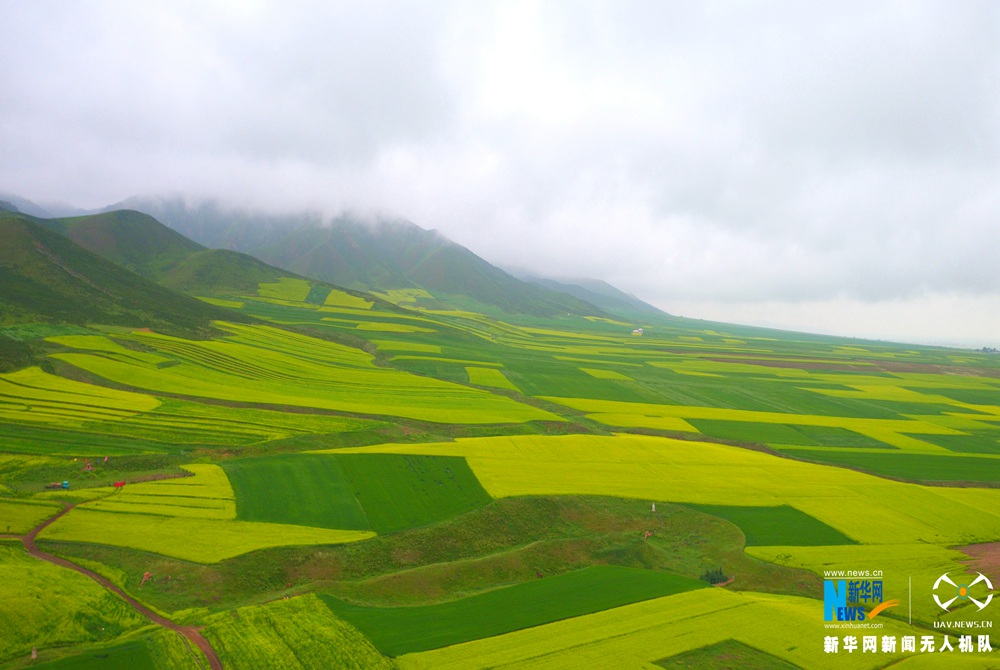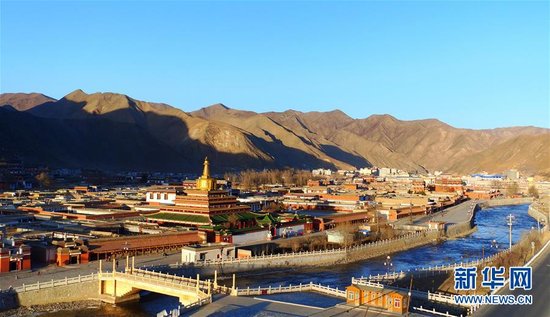Across China: Changed and unchanged of Tibetan Buddhist monasteries
Every day just as the sun rises, life inside of the Drepung Monastery begins as it has for centuries -- monks awaken, chant of sutras, have a light breakfast, and begin their studies.
An asphalt road connects the monastery at the foot of a mountain with the western suburb of Lhasa. Behind its whitewashed walls lurks a hidden world of golden sculptures and colored murals.
Wooden signage in both Chinese and English is everywhere inside Drepung directing for endless streams of Buddhist pilgrims and foreign tourists hither and thither.
For 600 years, Drepung, the largest monastery of the Gelug school, has stood silent witness to events beyond its walls.
MODERN MONASTERIES
Having survived hundreds of years, many monasteries are in a poor condition and in need of work.
More than 200 million yuan (around 30 million U.S. dollars) of government money have been spent renovating Drepung over the past five years.
"The buildings were repaired and parking lot and nursing home built," said Nyima, head of Drepung's management committee.
Tibet started providing funds to monasteries in 2011, supplying them with electricity and water, and building roads, bath houses, greenhouses and garbage treatment facilities.
In addition to government money, Drepung Monastery makes more than 10 million yuan each year from ticket, alms given by pilgrims and earnings from shops and teahouses. Most of the money is used to maintain the buildings and preserve its artwork. The remainder is making life easier for the monks.
A management committee consisting of government officials and monks has been set up in almost every monastery in Tibet. These official members work with monk members to manage monastery affairs and solve problems faced by monks.
Dradul entered Tsurpu Monastery 31 years ago. He enjoys high prestige in the Karma Kagyu school of Tibetan Buddhism since completing a three-year retreat of fully-cloistered meditation.
Dradul is a member of the monastery's management committee and a political advisor of Tibet. It is through those management committees that monks now have have medical and endowment insurance, and living allowances. Buildings are maintained. Infrastructure such as roads are improved.
Datri, a government-designated member of the management committee of Drepung Monastery, has helped source more than 200,000 yuan in medical aid to 39 monks. He also helped 114 monks apply for living allowances.
"These officials are like a family member to us. Whenever we have a problem, we will look for their help," said Ngawang Gonchen, a monk.
UNCHANGED TRADITION
Religious study and services are the main activities of monastic life.
Tibet Buddhist Theological Institute, the autonomous region's first comprehensive Buddhist academy, has branches in 14 major monasteries.
Aged between 17 and 30, the monks at the institute's branch at Drepung study sutra to acquire the highest academic degree -- "Geshe Lharampa" -- similar to a doctorate. Since 2005, more than 100 monks have received the degree in Tibet.
"Those monks who study sutras are the future of any monastery," said Ngawang Kunqing, head of the Drepung branch of the institute. "So it's important to look after them well."
Those with excellent conduct and academic performance have the opportunity to study at the institute, which recruited its first batch of 150 monks in 2011.
"To acquire the highest degree is not easy," said Ngawang Chupa, a sutra teacher from Ganden Monastery. It took him 32 years to obtain his "Geshe Lharampa". He now teaches sutra to more than 100 monks in 4 classes.
Dharma assemblies are still the most important activities in monasteries.
On the anniversary of the birth of the Buddha every year, Sera Monastery begins an assembly at 6 a.m., when over 500 monks chant sutras together. It's a grand sight to see.
On auspicious days of Tibetan calendar, monasteries, big and small, hold the same traditional ceremonies as they have for centuries.
Tsurphu Monastery holds 38 such ceremonies a year, while Sera and Drepung monasteries hold even more.
An official survey found 1,787 places of religious activity in Tibet, with over 46,000 Buddhist monks and nuns in-residence, offering on-the-spot services like weddings or funerals.
"Such services not only meet the religious demand of Tibetans, they are also the responsibility of monks," said Dorje Tsering from the religion bureau of Shigatse city.
Your Comment
Name E-mailRelated News
-
;
-
-

-
Rare Tibetan Buddhist canons restored
Experts in northwest China's Gansu Province announced Wednesday that they have restored more than 3,000 pages of some rare Tibetan Buddhist canons, which were severely damaged by floods in the 1970s.
-
-
-

-
Labrang Monastery repairs 10 temple halls in four years
After four years of large-scale renovations, Labrang Monastery in Xiahe County, Gannan Tibetan Autonomous Prefecture, Gansu Province recently completed repair work on 10 temple halls, which are now gradually being opened to the public.
-
Based in Lhasa, Tibet Vista is a Tibet travel agency that specialized in Tibet permit, and Tibet tours for both private and group travelers at a local price!
•4 Days Lhasa City Group Tour from USD 460 •8 Days Everest Base Camp Group Tour from USD 850 •15 Days Mt.Kailash Group Tour from USD 1780 •2016 Tibet Train Tours from Beijing, Shanghai, Chengdu, Xining,etc










